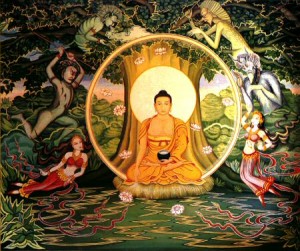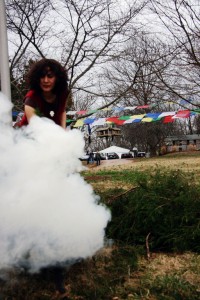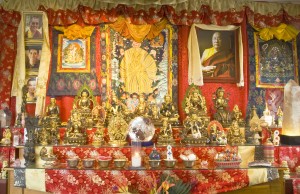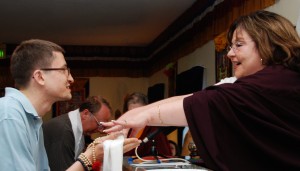The following is an excerpt from a teaching by Jetsunma Ahkon Lhamo called “Keeping Heart Samaya”
One of the things that I have learned since I met with my teacher is to follow the fundamental thoughts as taught by the Buddha very carefully, starting with the thought that all sentient beings are suffering, and that suffering is all pervasive. According to the Buddha’s teachings, we are all suffering from desire. It seems as though we are suffering from external circumstances, but, in fact, we are suffering from desire. In fact, we are suffering from our response to desire as well. So we have a complicated, dualistic, or I should say double-edged, kind of suffering. We have the suffering that comes from desire, and we also have the suffering that is invoked when desire is not met. So it is two-edged and more complicated than one would think.
All sentient beings are suffering. They are suffering from desire, but there is an end to suffering. This is the news that is so good it is almost hard to take in. This is the news that is so magnificent that it is actually hard to understand when we have had an entire life, and we have noticed that there is always something. There is always something. Everything that comes together separates. Everything that is really good and has brought a lot of joy and a lot of benefit, gone. Even if we find ourselves in the most joyous, gorgeous, fabulous mood, it lasts about, oh, ten minutes. So we have noticed that happiness is ephemeral. It comes and goes. It sort of burns away and returns, and in between there is that suffering.
So when we hear that there is an end to suffering, a cessation to suffering, we wonder, how can this be? How can this possibly be?
The Buddha teaches us the next thought then, that the end or cessation of suffering is called enlightenment. Yes, that is true because none of us, being ordinary sentient beings, have experienced enlightenment yet. Sentient beings simply have not experienced that, so they do not know what the cessation of suffering actually feels like.
Then after introducing these thoughts, Lord Buddha teaches us how to accomplish the cessation of suffering, or enlightenment. In many forms of Buddhism, this is called the Eightfold Path. In our system of Buddhism, this is condensed into the accomplishment of two things: wisdom and knowledge. We are taught that in order to accomplish the cessation of suffering we must exit samsara and enter into that precious awakened state called enlightenment.
Copyright © Jetsunma Ahkon Lhamo. All rights reserved







